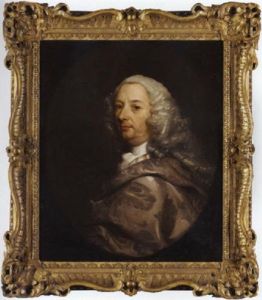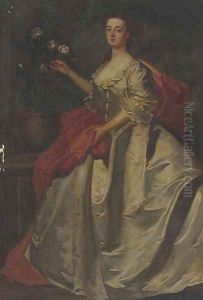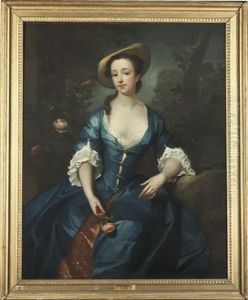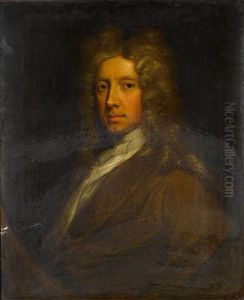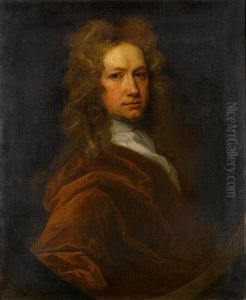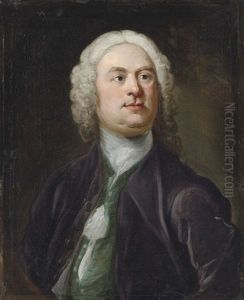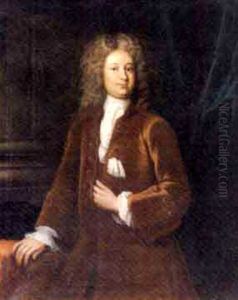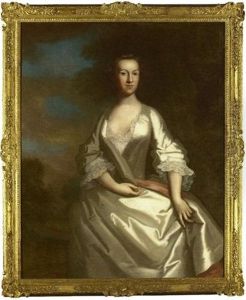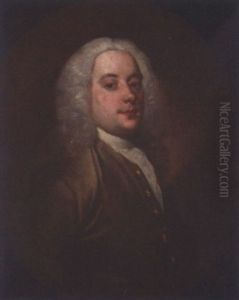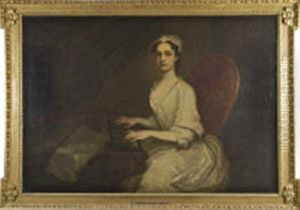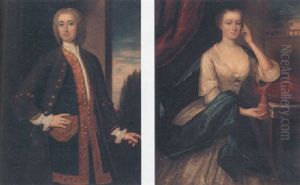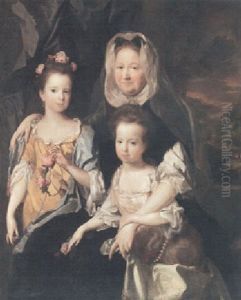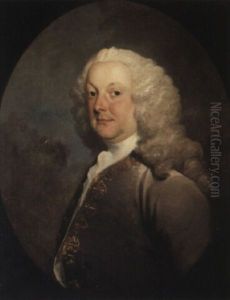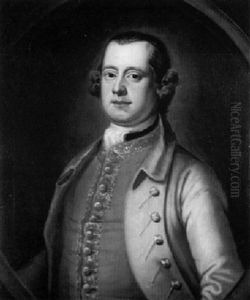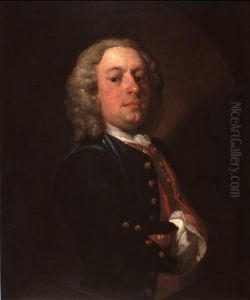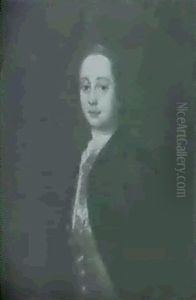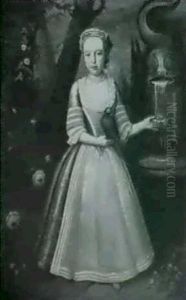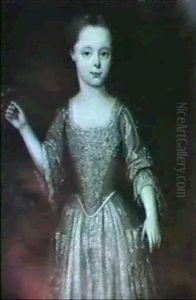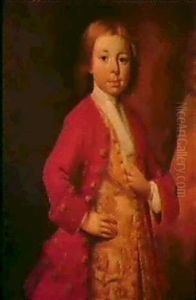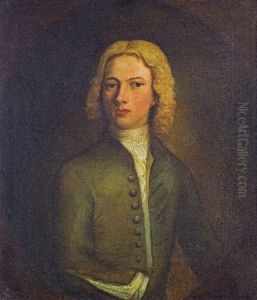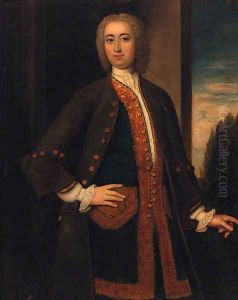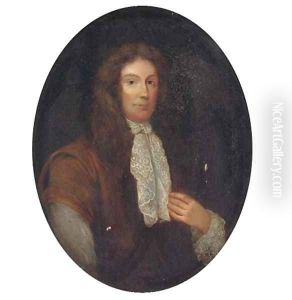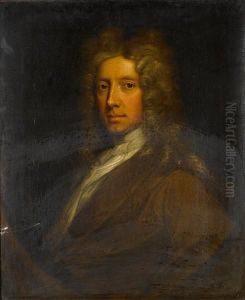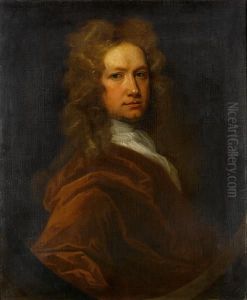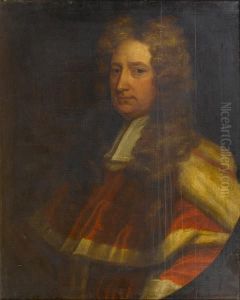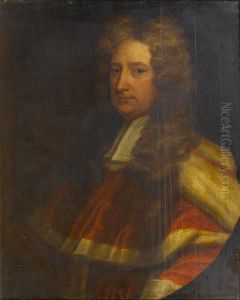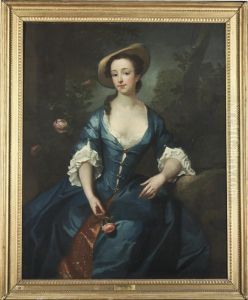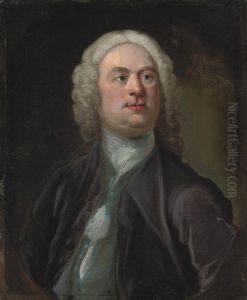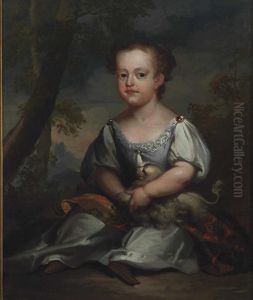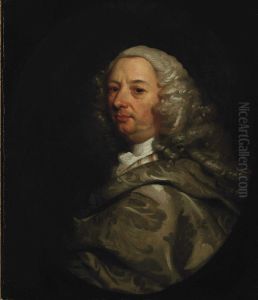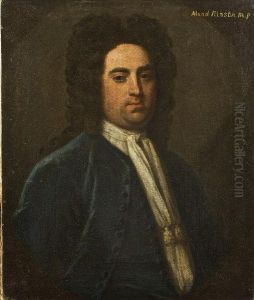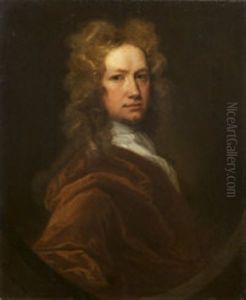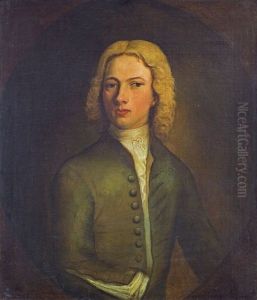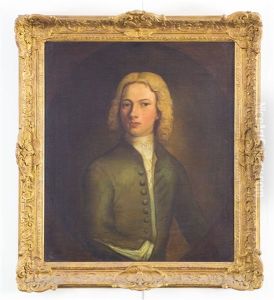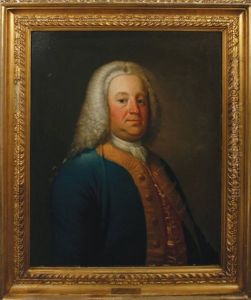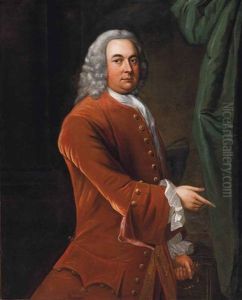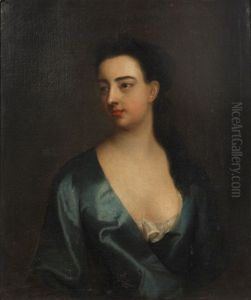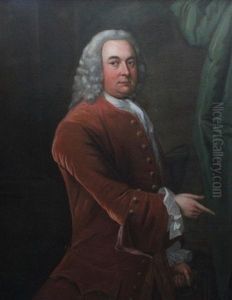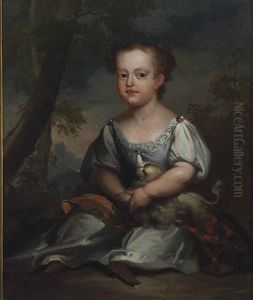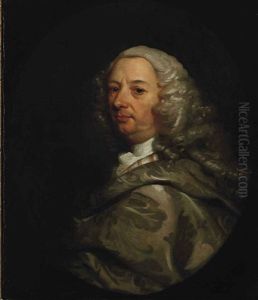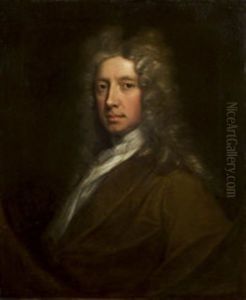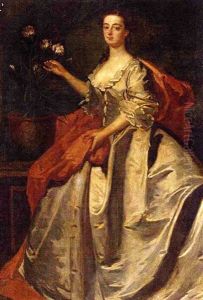James Latham Paintings
James Latham was an Irish portrait painter, born in Thurles, County Tipperary, Ireland, in 1696. He is considered one of the leading portraitists working in Ireland in the 18th century. Latham's early life and training are not well-documented, but it is known that he developed a sophisticated style that was influenced by the grand manner of contemporary British and European portrait painters. He moved to Dublin in the early 1720s, where he quickly established himself as a sought-after artist among the Irish aristocracy and the well-to-do.
Latham's work is characterized by its elegance and attention to detail, qualities that made him a favorite among his patrons. He was adept at capturing the likeness and personality of his sitters, a skill that contributed to his reputation and success. Latham's portraits often featured elaborate costumes and settings, reflecting the social status and wealth of his subjects. Despite the prominence of his clients, very little is known about Latham's personal life, and he remains a somewhat enigmatic figure outside of his artistic contributions.
In the mid-1740s, Latham left Dublin and moved to England, where he continued to work until his death in 1747. His decision to leave Ireland is not clearly understood, but it may have been motivated by personal reasons or a desire for greater recognition. While Latham's work was well-regarded during his lifetime, his reputation was somewhat eclipsed by other portraitists of the era in the years following his death. However, in recent decades, there has been a renewed interest in his work, and he is now celebrated as one of the most important Irish painters of the 18th century.
Latham's legacy is preserved in the collections of several important museums and galleries in Ireland and the United Kingdom, where his portraits continue to be admired for their beauty and historical significance. Despite the challenges of reconstructing his life story, James Latham's enduring contributions to the field of portrait painting ensure that he remains an important figure in the history of Irish art.
